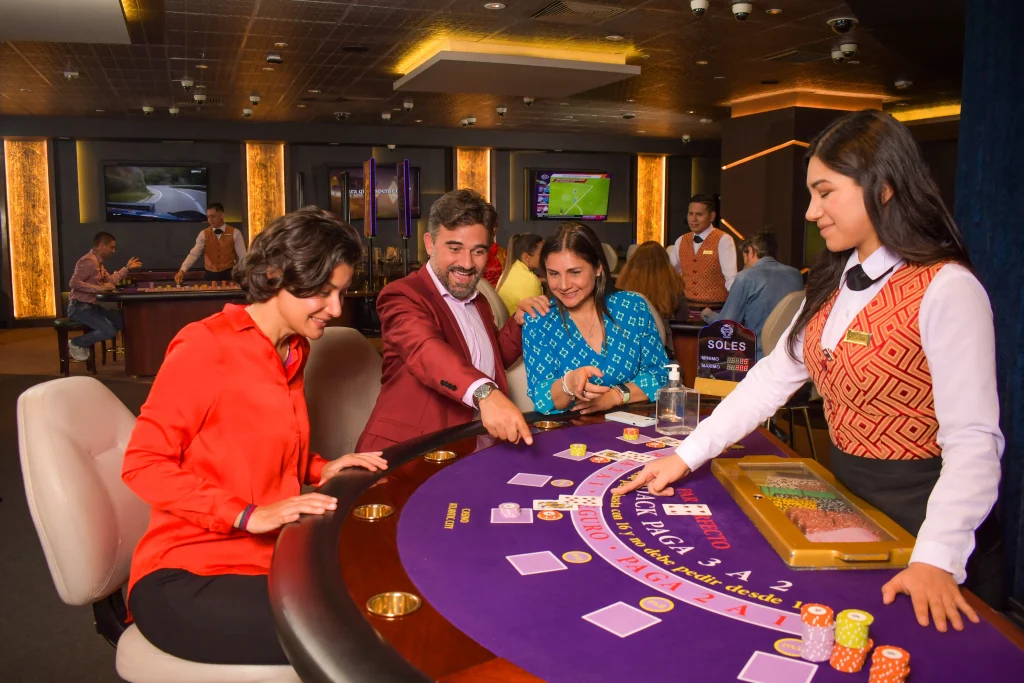The Psychological principles Behind Casino Game Development
Casino games have long captivated human interest, drawing participants into a world filled with luck, planning, and the allure of adventure. Each activity is painstakingly crafted not just for enjoyment, but also to inspire particular emotional responses that keep gamblers engaged and invested. Understanding the motivations behind these designs reveals much about how behavioral psychology plays a vital role in the gaming experience.
From the vivid lights and dynamic sounds to the sophisticated layering of systems and rewards, casino games are designed to create an atmosphere of anticipation and eagerness. Game designers leverage psychological principles to influence player behavior, whether through the use of jackpots, close-call situations, or social connections. By examining these elements, we can better appreciate how casino games fulfill not just a need for entertainment, but more profound psychological needs for thrill and hazard.
Understanding Player Actions
Casino games are designed with a deep comprehension of gamer psychology, which is vital for drawing in and retaining players. The thrill of the game, alongside the expectation of winning, establishes a powerful allure. Game designers employ elements like sound effects, dynamic graphics, and engaging gameplay to engage attention and elicit emotional responses. These sensory effects enhance the immersive experience, making players feel more invested in the game.
Another important aspect of player behavior is the idea of risk versus reward. Casino games often balance risky situations with the potential for considerable rewards, which can result in the phenomenon known as near-miss effect. When players come within reach to winning, the brain releases dopamine, bolstering their behavior and prompting them to persist playing in quest of that hard-to-reach win. This cycle of anticipation and letdown plays a critical role in how games are designed and advertised.

Lastly, community aspects also play a pivotal role in player behavior at casinos. Many games are crafted to be played in teams or with other players, fostering a sense of belonging and shared experience. The community engagement inherent in games like poker enhances enjoyment and can lead to extended gameplay. Designers leverage on this by crafting environments that encourage players to stay, interact, and return, making the overall casino experience more attractive.
The Role of Visuals and Audio
Visuals and audio play a crucial role in improving the player’s experience within gambling games. Designers utilize vibrant colors, eye-catching graphics, and engaging animations to capture players’ attention and sustain their interest. The use of motifs, such as adventure or opulence, helps create an engaging atmosphere that takes players into another world. By connecting to the senses, these elements contribute to a intensified emotional response, prompting players to engage more profoundly with the games.
Audio design is equally important in reinforcing the experience of gambling games. The mix of background music, sound effects for successful combinations, and environmental noises creates an sound landscape that holds players enthralled. Sounds associated with victories, such as chiming bells or celebratory music, evoke feelings of excitement and satisfaction, prompting players to keep playing. These audio cues are strategically placed to enhance the thrill of the game and create a more immersive experience.
Moreover, the synchronization of visuals and sound is essential for reinforcing the game’s overall theme and mood. Each element should coordinate harmoniously to create a cohesive experience that draws players in. The effective use of this synergy not only enhances user enjoyment but also increases the likelihood of repeat play, as players become more invested in the immersive world that the casino games offer. This thoughtful combination of visuals and audio ultimately enhances player engagement and loyalty.
Reward Structures and Engagement
The design of casino experiences heavily depends on reward systems to ensure participants involved and coming back for additional experiences. These systems are rooted in psychological theories that take advantage of human nature and desire. Players are often motivated by the thrill of success, which is supported by instant responses through the game’s design. This instant gratification not just enhances the overall experience but also cultivates a feeling of achievement, prompting participants to continue playing in hopes of greater gains.
Casinos utilize various reward structures, including large payouts, extra rewards, and increased rewards, to engage players. These features create a layer of excitement that maintains engagement. Additionally, the randomness of outcomes plays a crucial role in sustaining attention. The intermittent reinforcement schedule, where successes are unpredictable but occur often enough, maintains participants on edge and driven to continue participating. This cycle of anticipation and expectation is essential to the effectiveness of gambling experiences.
Moreover, community aspects, such as competitive events and collaborative options, boost the participation factor by tapping into the desire to compete of players. The communal aspect of gaming with fellow participants can amplify the thrill of winning and create a community atmosphere within the gaming space. By combining these social dynamics with effective incentive structures, casino games not only offer fun but also foster a deeper connection among players, reinforcing their commitment to the gaming experience. https://rr88e2.com/